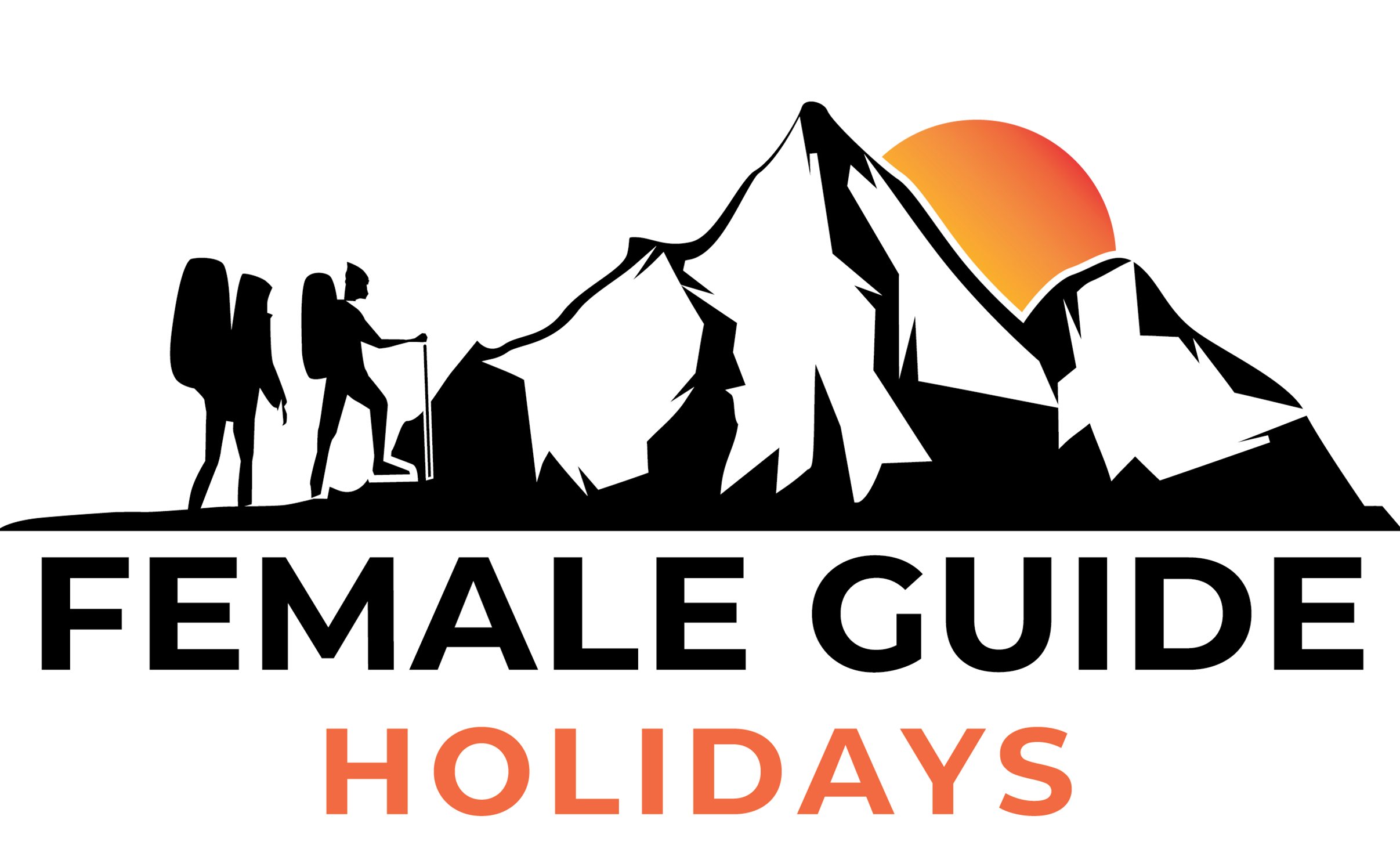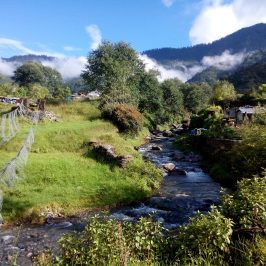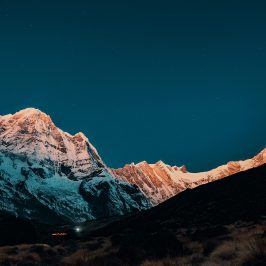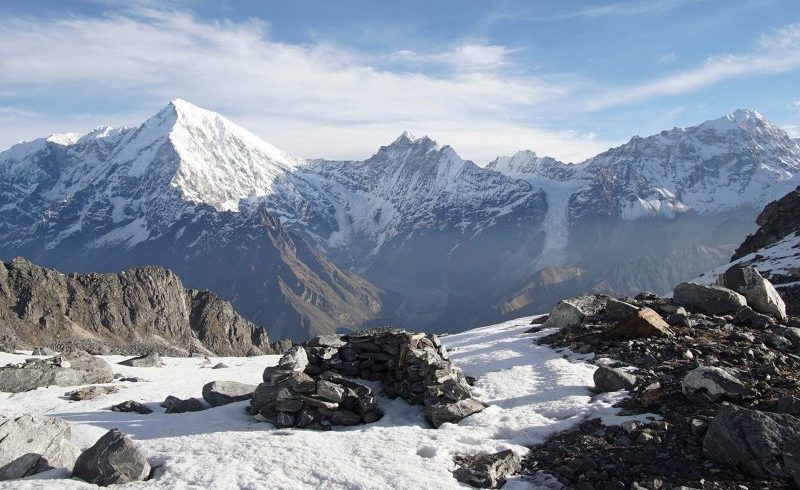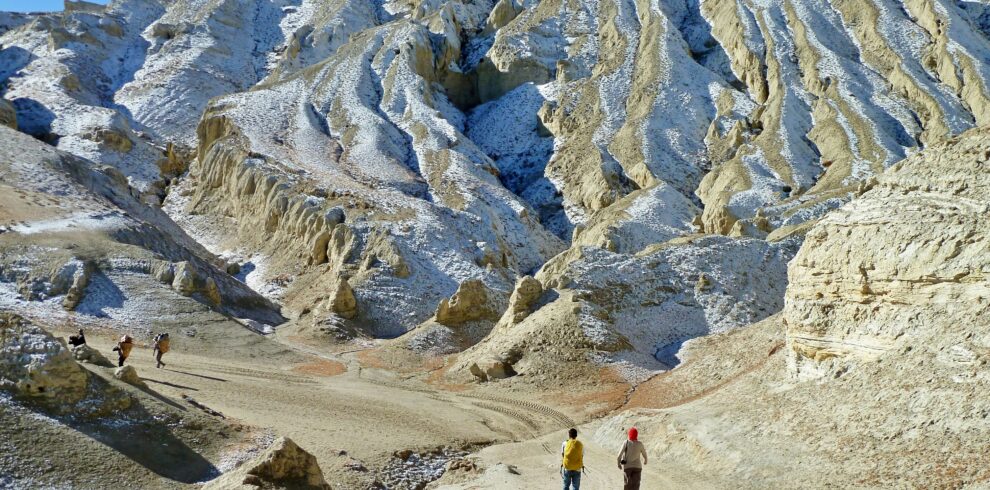The Jiri to Everest Base Camp trek offers an extraordinary journey that retraces the iconic footsteps of Sir Edmund Hillary and Tenzing Norgay Sherpa, the legendary pioneers who conquered the world’s highest peak. This trek presents an unrivaled combination of breathtaking natural beauty and rich cultural heritage, making it an unforgettable adventure.
Spanning a duration of 21 days, this trail encompasses immense contrasts in altitudes, showcasing a remarkable variety of vegetation and a captivating blend of lifestyles. Unlike the more popular routes to Everest Base Camp, the Jiri trail traverses classic middle hills country, which remains blissfully serene and untamed by the bustling crowds that often dominate the northern sections.
The trek commences at a modest elevation gradually ascending to reach the pinnacle of Kala Patthar at 5545m. Kala Patthar, a dark mound of mountain rubble, rewards trekkers with unparalleled views of the majestic Mt. Everest.
Throughout the 21-day adventure, trekkers will be enchanted by the pristine natural beauty that surrounds them. Towering snow-capped peaks, cascading waterfalls, lush forests, and picturesque Sherpa villages create a picturesque backdrop that seems almost surreal. The encounters with the warm and hospitable local communities, steeped in their own unique traditions and customs, offer an insightful glimpse into the vibrant culture of the Himalayan region.
Embarking on the Jiri to Everest Base Camp trek is a once-in-a-lifetime adventure that promises unparalleled beauty, cultural immersion, and personal achievement. It is a journey that follows in the footsteps of legends, allowing trekkers to forge their own path of exploration and discovery amidst the awe-inspiring Himalayan landscape.
Entry Permits & Requirements:
The Jiri to Everest Base Camp Trek requires two permits:
1) Sagarmatha National Park Entry Permit and
2) Khumbu Rural Municipality Entrance Permit.
Unlike many Nepal Himalaya climbs, you won’t require a TIMS (Tourist Information Management System) card for this one.
The Nepal Tourism Board’s office in Kathmandu or the park’s entrance gate in Monjo can provide you with Sagarmatha National Park Entry Permit for NRS 3000.
The fee for citizens of SAARC nations is NRS 1500.
You must complete the permission application and present your passport or a copy of your passport. You must be in Lukla to obtain the Khumbu Pasang Lhamu Rural Municipality Entrance Permit. The permission costs NRS 2000 and may be acquired at the rural municipality counter on the outskirts of the settlement.
You won’t have to worry about waiting for permits since the company or our guides will take care of everything.
You must submit the following documents and data to get these permits:
Copy of your passport
- 2 Passport-sized photos
- Dates when your trek starts and ends
- Itinerary/route
- Entry and exit points
- Emergency Contact Information (local and home country’s)
- Travel Insurance Details
Meals and Drinking Water:
In popular trekking areas like Annapurna, Everest, Langtang, and Manaslu have a menu system with different ethnic cuisines foods as well as western meals, but some places provide you with typical Nepali meals which are different from international meals, these meals are prepared by the local supplement, every tourist lodge and tea house have a well-trained cook basically attention to clean, hygienic, fresh, and delicious foods, every lodge has safe drinking water or mineral water. If you buy water purification tablet from Kathmandu, you can take water from the tap and purify it by yourself, this will be cheaper and control plastic pollution as well.
Accommodation:
You will find local accommodations in the form of trekking lodges and teahouses, which are situated every hour or so along the trail. These accommodations provide basic facilities such as food, electricity, and clean rooms. The rooms generally have twin sharing beds and a single bed, with good quality mattresses that reduce the weight of your backpack. You can expect a hygienic and comfortable atmosphere at these accommodations. The dining rooms usually have a central heating system that uses firewood to keep you warm and cozy during your stay. This is also a great place to rest and connect with other travelers by sharing your stories. Additionally, campsites are available along the trail for those who want to experience camping in the outdoors.
Best Time to Visit?
The best time to go on Everest trek is during autumn and spring. The months of September, October, November, March, April, and May are the best time to visit as the weather conditions are better for exploring the high mountain terrain with good visibility.
During autumn, the weather is clear and warm, making it perfect for trekking on high Himalayan terrains. In spring, from March to May, the landscape changes with blooming trees of Rhododendron, mixed with Confers, Oaks, Orchids, and ferns, along with colorful wildflowers, making the region look stunning.
The monsoon season, with harsh weather conditions, is usually avoided by trekkers. The winter season, with heavy snowfall, covers most of the trail, making it challenging to access higher grounds in the region.
Travel Insurance:
Travel insurance is required for all clients engaging in any activity. We strongly urge you to obtain a complete insurance plan from reputable insurance.
Passport and Visa:
Every client must have a valid passport from the return date with a 6 months prior validity by the Nepalese consulate in your country or the immigration office at Tribhuvan International Airport in Kathmandu.
Equipment list:
- Daypack above 40 liters. (Must be waterproof)
- Down jacket (rental available)
- Warm sleeping bag (rental available)
- Sun head, gulf cap, sunglasses
- Headlamp, and torchlight, power bank, and extra batteries
- Ear-muffs, sun Lotions/sun cream, wet wipes, and hand sanitizer.
- Pair of liner gloves thin wool and synthetic.
- Cotton t-shirts, Synthetic t-shirt.
- Long-sleeve polyester or synthetic lightweight for sunny days.
- Soft-shell jacket water & wind resist.
- Swimming costume.
- Inner clothes as your requirement.
- Liner socks, woolen socks.
- Proper trekking boots with good ankle support.
- Imodium or Pepto Bismo capsules for upset stomach or diarrhea.
- Diamox for altitude sickness. The guide will help you to take it.
- One small personal-sized first-aid kit with blister treatments such as moleskin, bands.
- anti-infection ointments, muscle relief ointments
Important Note:
Your safety is of paramount importance to us at the Female Guide Holiday. We have the absolute authority to cancel the trip or change the itinerary, when deemed necessary or when we have reason to believe your safety is at stake. Weather conditions, the health condition of a group member, natural disasters, and such, can contribute to changes in the itinerary when traveling in remote mountainous regions. In these extreme situations, we kindly request that you offer your full co-operation to the trusted leader of the group appointed by the Female Guide Holiday. However, we assure you that we will make every effort to keep to the above itinerary.
